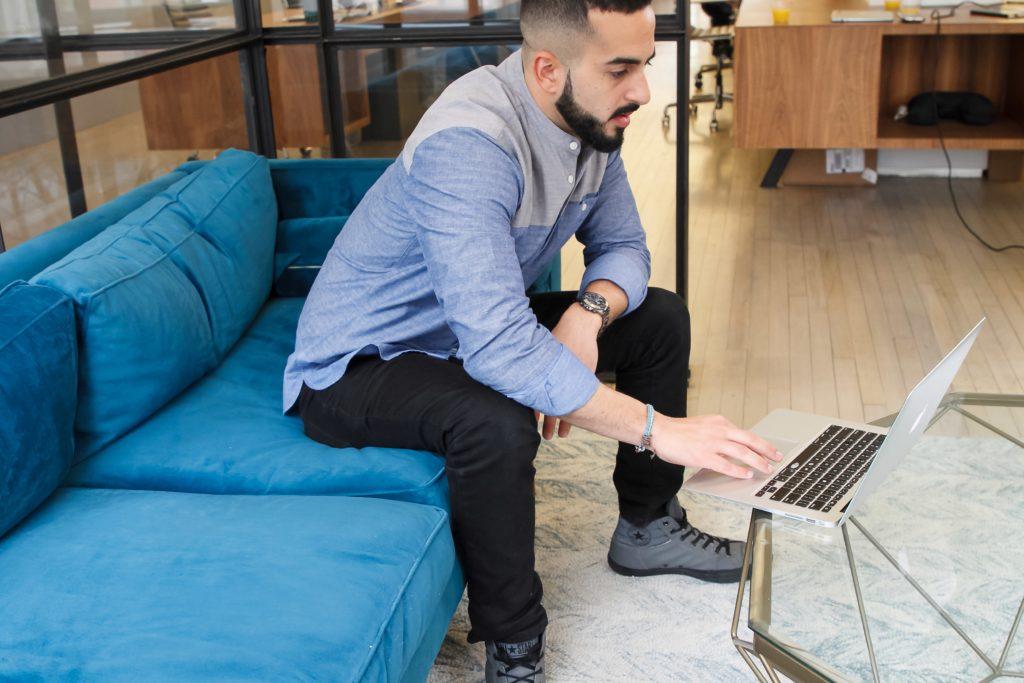 Then what?
Then what?
People tend to prepare, prepare and prepare for the ask.
Then they pitch, pitch, pitch.
Yet they don’t think much about persist, persist, persist when it comes to navigating the donor’s response.
How to Handle the “After Ask”
Failing to persist is a huge mistake.
It’s so huge, it can undermine your fundraising success for years to come.
Because you only have so many realistic prospects for your nonprofit.
You don’t want to simply toss them out like yesterday’s news, simply because they don’t (right away) agree to make a major gift.
Obviously, not everyone will want to give to your organization. When you’re doing annual fundraising, especially new donor acquisition, you’re going to want to frequently purge your lists of folks who haven’t ever given to you after a few years. Or who have stopped giving to you after roughly five years.
But with donors who make above-average gifts, they’ve demonstrated an interest in what you do. They’ve invested. They’ve got some skin in the game. So, you don’t want to be too eager to call the game on them!
You want to keep playing.
Fundraisers Give Up When They Misunderstand Their Role
When fundraisers are treated as “money grubbers,” no one likes them – even the fundraisers themselves! Money is a huge hang up, and asking for it makes folks super uncomfortable.
Sometimes this happens because we’re told it’s not polite to ask for money. So, we reluctantly screw up our courage, make the ask, and then run away at the slightest bit of resistance. We tell ourselves we tried, so our job is done. Them’s the breaks. You win some, you lose some.
But what if there were another way?
What if you entered into every ask confident you’d be able to close the sale, if not today then someday soon?
What if, rather than having a script only for the pitch, you also had a script for cultivating the relationship for the long term?
What if your role was not about begging or coercing people for money, but was more about collaborating, coaching and guiding people towards something that will make them feel good?
You see, the philanthropy facilitator’s job doesn’t end with the ask. That’s just a mid-point on the donor’s pathway towards passionate philanthropy. And it’s the job of the facilitator (aka “Donor Sherpa”) to assure the donor has a joyful, fulfilling philanthropic experience.
If this were your approach to donor chats, meetings and visits, you wouldn’t worry so much about hearing “no” when you asked for a gift. You’d understand “no” is not personal, but has to do with the donor’s understanding of how making a gift will align with their values and priorities. “No” doesn’t mean “never.” It may mean a range of things, like no, not now; no, not for this project; no, not this amount, or no, not if you ask.
How to Follow-Up on Common Donor Responses
There are four common ways donors respond to an ask. You need to be prepared to deal with each one of them.
- YES
Have a plan in place for what you’ll do next. Probably you’ll send a warm follow-up letter with a remit envelope and/or information about how to make the gift via check, stock, qualified IRA distribution or donor advised fund. You might notify your executive director and/or board president so they can send their own personal note or, better yet, make a prompt thank you phone call. You’ll also want to enter the commitment into your database, making note of subsequent follow-up touches and moves you’d like to initiate. Whatever you do, don’t just treat this as a one-and-done transaction.
- NEED TIME
Always begin by saying thank you for their willingness to consider this request. Then show you understand, and gratefully accept, their appeal for more deliberation time. “I understand this is a significant decision. Are there any questions I can answer? Any additional information you need? Might we set a time, at your convenience, to check in? Would a week from today work for you?”
- OFFERS LESS
Begin, as always, with thank you. If it’s significantly less, you can invite the donor to reconsider by letting them know you don’t need a firm response right now. Again, let them know it’s a significant request and you understand their hesitation right now.
- NO
No now doesn’t necessarily mean no forever. First, know this is a learning opportunity. Both for you, and the donor. The fundraiser’s goal is to stay positive, and keep the conversation open. This may just not be the right time, project, amount or even asker. It’s not about you. It’s about the donor.
If you persist a bit, and really listen to what the donor has to say, you’ll learn a lot. Maybe it will be about what floats their boat. Maybe it will be about their family, their values or even their finances. Maybe you’ll just learn how they think. It’s all valuable information you can use to keep building the relationship.
Research is Key
Your ask should build upon everything the donor has already done, and is currently doing, with your organization. So, begin in your own database to assess all of the donor’s affiliations with you. You should know, when talking to them, that they volunteer, were a parent, attended your recent event, and even tend to click on articles about seniors rather than children.
Recency is also important. The fact they supported a project six years ago does not mean that’s the project they’d choose to support today. Consider what’s top of mind for your donor in the present moment.
This means staying abreast of the news and shifting priorities locally, nationally and even internationally so you can talk with your donors about today’s most pressing issues.
Your Case for Support is Critical
Constantly refresh this so your case for philanthropic support meets the moment. Make sure it’s topical, relevant and matched to the donor’s interests.
When you’re engaged in major gift fundraising, one size does not fit all. You’ve got to make a case that matches the donor’s values and current passions.
Building Authentic Relationships is Crucial
You can do this in person and also digitally. Online channels have become a genuinely useful way to engage major donors and keep your nonprofit mission top of mind. So don’t ignore these platforms.
Particularly pay attention to the channels your donors use, and show up there. Also, monitor their engagement – it’s amazing what you can learn about their interests!
Making People Feel Good is Most Important of All
Asking folks for a gift kick starts the feel-good process. We know from MRI studies that merely contemplating making a philanthropic gift gives people a rush of dopamine that floods their brain’s pleasure center with a warm glow. Alas, this warm glow doesn’t last long.
When people actually decide to give, they’ll feel something. But it’s not always good. Sometimes the act is guilt-induced. Sometimes it feels coerced. People give in hope of being psychologically rewarded, but they generally need some affirmation to reap that reward. Giving, sadly, is often not its own reward.
The mere act of giving isn’t what brings joy. For joy to be felt, other factors must come in to play.
Some of the things that bring good feelings are:
-
A pleasant interaction with the solicitor before, during and after giving.
-
A prompt, personal and authentic expression of gratitude.
-
Having cherished personal values validated.
-
Having done something that aligns with the giver’s identity.
-
Feeling confident the gift will have the desired impact.
-
Feeling one has done something larger than oneself, for the communal good.
-
Feeling a sense of purpose.
Bottom Line
Always come from a place of giving donors what they want. Within reason, of course, but your job as philanthropy facilitator is to guide folks along the pathway to passionate philanthropy. Done well, this should be a fulfilling journey for all involved.
- Donors want to support organizations where they feel invested in the mission due to values alignment.
- Donors want to invest where they feel their dollars can have the greatest impact.
- Donors want to feel valued, appreciated and recognized.
- Donors want to find the meaning and purpose they seek.
The most important “feel good” is when donors love the person they see when they look in the mirror.
Whatever you can do to (1) match donor values and passions; (2) demonstrate the impact donor gifts will have; (3) validate the value they bring, and (4) deliver meaning and purpose to make donors feel good, do it.
This is the key to developing lifetime donor support.
Want to Learn More about Major Gift Asks?
 Check out my step-by-step Guide, Anatomy of a Major Gift Ask. You’ll get clearly explained tips, pointers and even sample language, to help you succeed (in spades!) when making a major gift solicitation. I call it a “Cheat Sheet” because you don’t have to reinvent the wheel. This will walk you through some of the common pitfalls so you can avoid them, and will arm you with tools to help you put your best foot forward.
Check out my step-by-step Guide, Anatomy of a Major Gift Ask. You’ll get clearly explained tips, pointers and even sample language, to help you succeed (in spades!) when making a major gift solicitation. I call it a “Cheat Sheet” because you don’t have to reinvent the wheel. This will walk you through some of the common pitfalls so you can avoid them, and will arm you with tools to help you put your best foot forward.
As with all Clairification products, this comes with a no-questions-asked, 30-day, 100% refund guarantee plus a free 15-minute Q&A session. What are you waiting for?!?!
Want to Dive into the Major Gifts Pool Deep End?
 The Certification Course for Major Gift Fundraisers and the companion Certification Course for Managers and Executives are your ticket to the fundraising Olympics. These courses will have you diving off the high board in perfect form, assuring you rack up the highest scores (aka gifts) possible. The Veritus Group will be your expert teachers and coaches, and will help you every step of the way. In just three months from the start date you’ll be ready to take the leap, filled with confidence and capability beyond your wildest imagination. Take the course with your team to get on the same page, and feel free to mix and match the courses to qualify for the generous group discount for parties of three or more. Email me for discount info, or with any questions, at claire@clairification.com.
The Certification Course for Major Gift Fundraisers and the companion Certification Course for Managers and Executives are your ticket to the fundraising Olympics. These courses will have you diving off the high board in perfect form, assuring you rack up the highest scores (aka gifts) possible. The Veritus Group will be your expert teachers and coaches, and will help you every step of the way. In just three months from the start date you’ll be ready to take the leap, filled with confidence and capability beyond your wildest imagination. Take the course with your team to get on the same page, and feel free to mix and match the courses to qualify for the generous group discount for parties of three or more. Email me for discount info, or with any questions, at claire@clairification.com.
Photo by The Jopwell Collection on Unsplash





